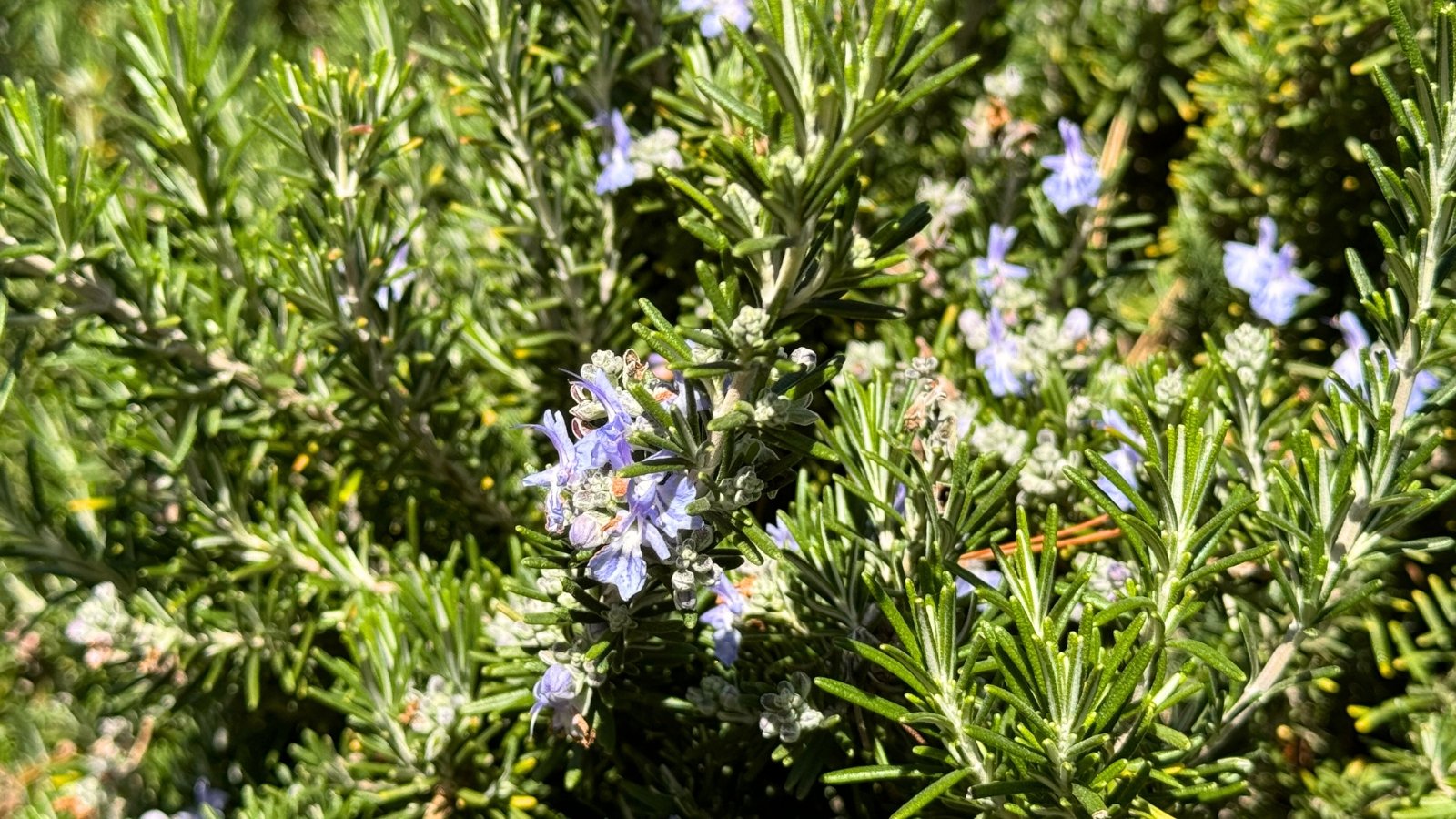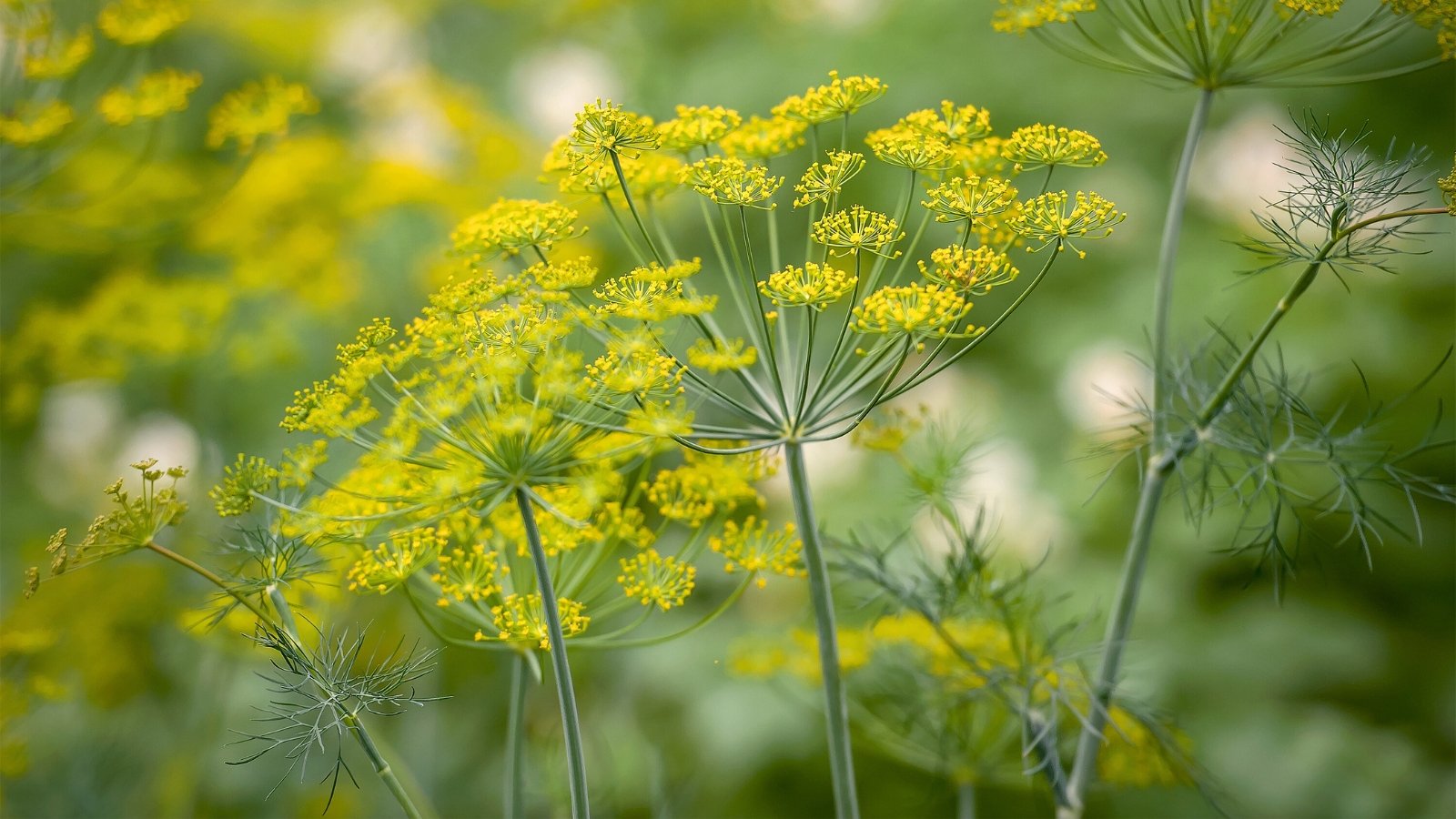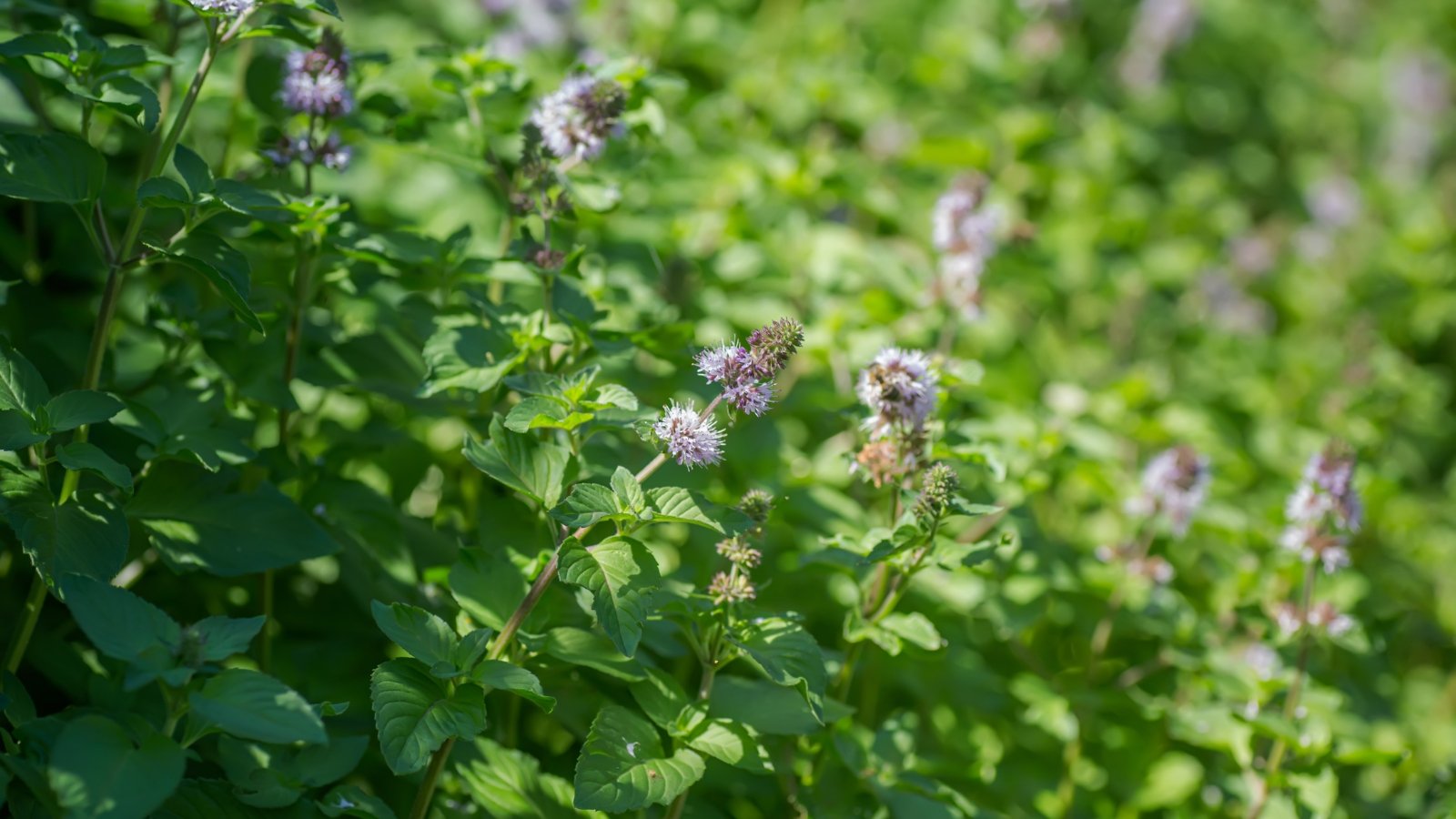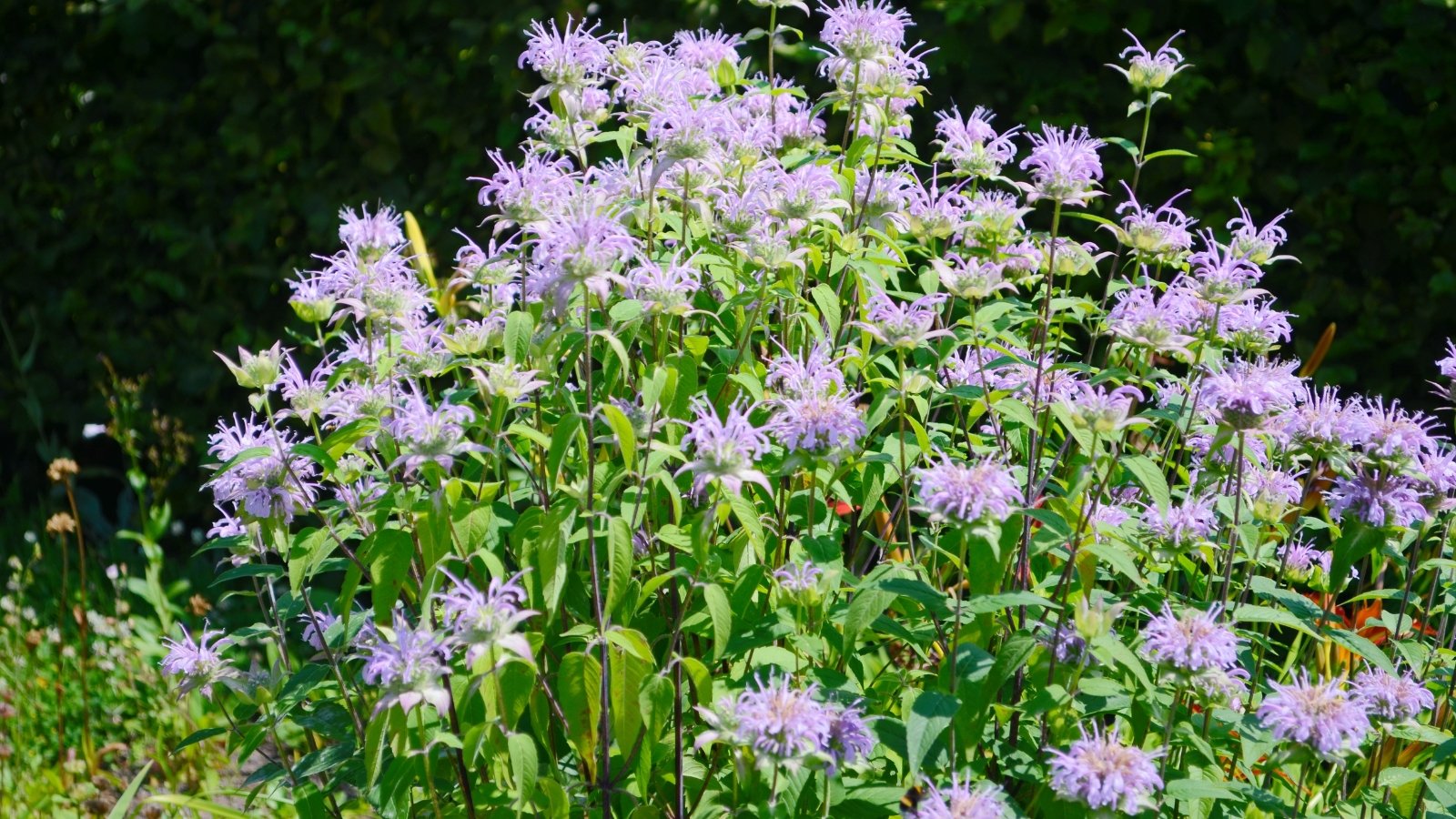PROTECT YOUR DNA WITH QUANTUM TECHNOLOGY
Orgo-Life the new way to the future Advertising by AdpathwayMany of the herbs we grow and love for their culinary use are also excellent food sources for pollinators and other beneficial insects. In fact, they typically rank among the top contenders for their long blooming season and resistance to nuisance insects. As a result, they require fewer pesticides and even repel many of the pests that we want to keep at bay.
For these reasons, it makes perfect sense for pollinator gardeners to incorporate herbs into their spaces. It’s a great way to attract the beneficial insects while deterring the harmful ones from damaging the rest of your plants.
In addition to their long bloom times, many herbs produce flowers that are blue or purple. This is noteworthy because bees see a different range of colors than humans, including ultraviolet light. As a result, blue and purple flowers tend to be the most appealing to them, while red flowers are the least.
Most, if not all, herbs prefer well-draining soil and full sun exposure. With few exceptions, they are drought-tolerant and don’t require much fertilizer. It’s perfectly fine to plant most herbs with your other pollinator plants, just be mindful about those in the mint family. These can spread aggressively and crowd out other important plants.
Herbs are low-maintenance, and many provide shelter and habitat for pollinators, while also serving as hosts for their larvae. Adding them to your garden is a great, low-effort way to enhance the biodiversity in your space, as well as supporting valuable pollinator populations. Let’s examine some herbs that excel at nourishing pollinators and other beneficial insects.
Thyme
 It fills in garden gaps with nectar and quiet resilience.
It fills in garden gaps with nectar and quiet resilience.Thyme is an excellent herb for pollinators, especially bees. Its nectar-rich, abundant, long-blooming flowers bridge the gap between spring and summer blooming plants. This is crucial for bees, as they need to produce significant brood during this period.
The low-growing habit of most thyme varieties makes them ideal for safe foraging. Mat-forming types even provide nesting space and secure cover for beneficial insects. Thyme doesn’t require pesticides to look and perform at its best, making it a clean and safe source of nectar for pollinators of all kinds.
Lavender
 Fragrant and faithful, it’s a nonstop buffet for bees.
Fragrant and faithful, it’s a nonstop buffet for bees.Lavender is always near the top of the list for positive pollinator plants. This herb has a high nectar content, a long blooming period, and a strong fragrance that attracts beneficial insects while repelling the harmful ones. Some varieties are among the highest nectar producers per flower of any plant in the garden.
Bees, butterflies, and hoverflies are particularly attracted to lavender. The purple flowers have a long blooming season, beginning in the spring and often continuing through fall. They provide a steady source of food, bridging gaps between the seasonal blooms.

Borage
 Blue blossoms buzz from late spring straight through fall.
Blue blossoms buzz from late spring straight through fall.Borage is an excellent herb for feeding pollinators. Its continuous flowering and exceptionally nectar-rich flowers are easily accessible to beneficial insects. They are especially great for bees. This herb is another that is commonly at the top of the list for its benefit to pollinators.
Borage produces more nectar than most other plants, and it replenishes quickly so that pollinators can revisit the same flowers later in the day! It blooms from late spring through to fall, and the blue, star-shaped flowers have a perfect structure for both long- and short-tongued insects.
African Blue Basil
 Flower spikes pop all season like little purple fireworks.
Flower spikes pop all season like little purple fireworks.African Blue Basil attracts more bees than any other plant in my garden. Bumblebees, in particular, are attracted to the aromatic clusters of purple flowers on this pretty herb. It produces a ton of flower spikes, and the tiny blossoms have a high nectar content.
Unlike other types of basil, this one doesn’t go to seed. It’s a hybrid designed to bloom continuously, and it does just that. You’ll provide food for pollinators from spring until the first frost by planting this herb. It’s a tough plant that withstands rain and intense heat well.
Oregano
 When flowers bloom, the garden becomes a busy insect hub.
When flowers bloom, the garden becomes a busy insect hub.When allowed to flower, oregano is an excellent herb for pollinators, especially butterflies and bees. For this reason, it’s a great addition to pollinator and vegetable gardens. The small clusters of aromatic flowers are nectar-rich and bloom for up to eight weeks in late summer, during the dearth when many insects are on the hunt for scarce food sources.
The compact flower heads and abundance of flowers in proximity make foraging easy, as pollinators won’t have to travel far. Bees and butterflies expend a lot of energy moving from one flower to the next. Oregano is compact, and its flowers are plentiful and closely spaced, allowing them to conserve energy.
Rosemary
 A long blooming season keeps the bees coming back.
A long blooming season keeps the bees coming back.Rosemary is an attractive, aromatic evergreen herb that serves as an excellent pollinator food source. It has a long blooming period, during which it produces an abundance of small, tubular flowers. The blossoms are ideal for bees’ feeding anatomy, so rosemary is a consistent favorite.
The blooming habit of rosemary is another factor that makes it a great food source. The plants can begin blooming in late winter and continue to bloom into fall, with some even blooming year-round in certain climates.

Anise Hyssop
 Endless flower spikes bring life to the late garden days.
Endless flower spikes bring life to the late garden days.Anise hyssop is another herb that finds its way to the top of many pollinator plant lists. It’s one of the most popular in my own garden, and appeals to a wide range of beneficial insects. The flowers may not be primarily ornamental, but they’re packed with sugary-sweet nectar.
This is another long-blooming plant, blooming from mid-summer to frost. It’s a good late-season food source for pollinators preparing for winter. The spikes, covered in masses of tiny tubular flowers, allow beneficial insects to forage without expending a great deal of energy.
Catnip
 Its pungent scent wards off pests but invites helpful insects.
Its pungent scent wards off pests but invites helpful insects.Catnip is most well-known for its effect on felines. Its euphoric effects often increase the playful behavior of your pet cats. It’s also a surprisingly beneficial herb for pollinators.
Most bees and some butterflies are attracted to the clusters of small white and pale lavender flowers that bloom from late spring until early fall. Pests dislike its pungent smell, making it an ideal choice for growing in the vegetable garden, where it will offer protection from nuisance insects while attracting beneficial ones.
Cilantro
 When it bolts, it turns into a little insect magnet.
When it bolts, it turns into a little insect magnet.Allowing your cilantro to bolt is beneficial for pollinators, who love the lacy, white flowers. Although cilantro isn’t a superb nectar producer, the nectar it produces is easily accessible, and the smell repels common garden pests.
I find cilantro flowers more appealing than their flavor as an edible herb, so I like to let them flower. It bolts early in the season, especially in warm climates. The flower clusters are easily accessible to beneficial insects and provide a solid landing pad.
Dill
 This herb supports butterflies and attracts beneficial insects without pesticides.
This herb supports butterflies and attracts beneficial insects without pesticides.Dill is a great herb for many types of pollinators, thanks to its easily accessible nectar and foliage. It’s a larval host plant for the Black Swallowtail butterfly, which means it will keep these beauties coming back to visit your garden.
Dill uses nutrients efficiently and doesn’t require pesticides. The umbrella-shaped flower clusters make a good landing pad for insects to feed on their ample nectar. It’s also attractive to many beneficial predatory insects, which help keep pest populations under control.
Fennel
 Bright yellow umbels make a favorite landing spot late in the season.
Bright yellow umbels make a favorite landing spot late in the season.Fennel is another larval host for the Black Swallowtail butterfly, and is a nectar source for the adults, too. The large, flat umbels of yellow flowers are easily accessible to pollinators and other beneficial insects. It attracts many predatory insects, which help control pest populations.
With a blooming season that lasts from late summer through fall, this herb is a great late nectar source. It’s ideal for pollinators as they prepare for winter hibernation or migration. Fennel requires minimal care, but its roots are allelopathic and it can be invasive, so it’s best to grow it in a container, away from the roots of other plants.
Mint
 It’s a nectar-rich oasis when most other plants take a break.
It’s a nectar-rich oasis when most other plants take a break.Flowering mint is wonderful for pollinators. It produces dense spikes of flowers with high nectar content, making them easily accessible to all types of bees, butterflies, and even hummingbirds. Some types, such as wild mint, are exceptionally high nectar producers.
Mint blooms for a long period from mid-summer through fall. It flowers fine in hot, dry weather and provides an essential source of food when many plants are languishing in the summer heat. The densely packed flowers on this herb offer a significant reward with minimal effort.
Bee Balm
 From summer to fall, it’s a hotspot for many winged visitors.
From summer to fall, it’s a hotspot for many winged visitors.The name, bee balm, says it all. This herb, a member of the mint family, is an excellent addition to a pollinator garden. The brightly colored flowers are an excellent source of pollen and nectar, and bloom for an extended period throughout the summer. Sometimes they continue to bloom in the fall.
While it’s named for bees, bee balm is also a good food source for butterflies, hummingbirds, and other beneficial insects. Some species are even larval hosts for several species of moths. The foliage has an appealing minty aroma and repels pests.


 2 weeks ago
20
2 weeks ago
20





















 English (US) ·
English (US) ·  French (CA) ·
French (CA) ·